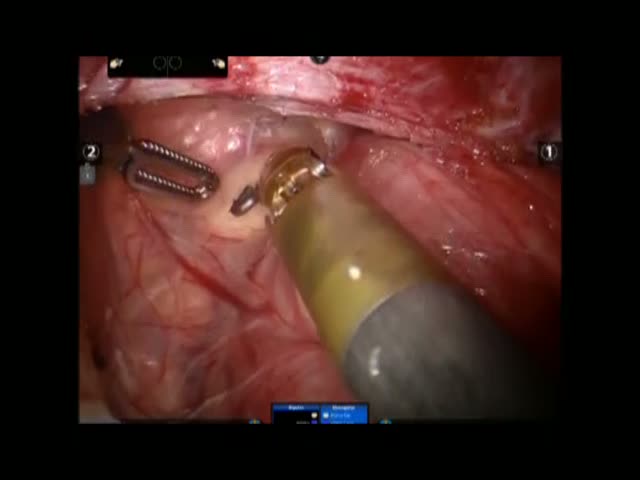
HIATAL HERNIA WITH MIGRATION OF THE ADJUSTABLE GASTRIC BAND TOWARDS THE GASTROESOPHAGEAL JUNCTION
June 25, 2012
S. Ayloo, F. Gheza, S. D’Ugo, L. Milone, PC. Giulianotti
Introduction: Solid dysphagia could be a late complication of gastric band, but rarely is associate to a massive passage of the gastric fundus through the band with an associated migration of the gastroesophageal junction in the thorax after more than 5 years. We present herein a video of a robotic-assisted hiatal hernia repair in a patient with an adjustable gastric band though which stomach fundus herniated. Methods A 65-year old obese female, BMI 35, underwent 5 years ago laparoscopic adjustable gastric band positioning. 7 months before referring to us she started to complain severe GERD and dysphagia for solids. A chest X-ray and a CT scan showed a herniation of about 5 cm of the gastroesophageal junction in the thorax. Patient was elected for Robotic approach to correct the herniation trying to save the band. Results A diagnostic laparoscopy was performed, reveling a great number of adhesion in the gastrophrenic ligament. It was very clear that the band was migrated up towards the hiatus and she has a hiatal hernia. A careful dissection was done in delineating both pillars of the crura on the left, and then entered the gastrohepatic ligament on the right, and then complete mobilization was performed at the GE-junction and the esophagus. Circumferential dissection at the distal esophagus was done to mobilize and reduce that portion of the stomach that has herniated into her chest and pulled down. Once this was done, the crura was approximated with 2-0 Prolene using pledgets, which was snug but not tight, and the band was left alone. The operative time was 90 minutes. There were no operative complications. Patient was discharged on postoperative day 2. Conclusions The robotic approach allows complex second-look intervention where fine dissection is required, in this case reparing the herniation avoiding the band removal.







